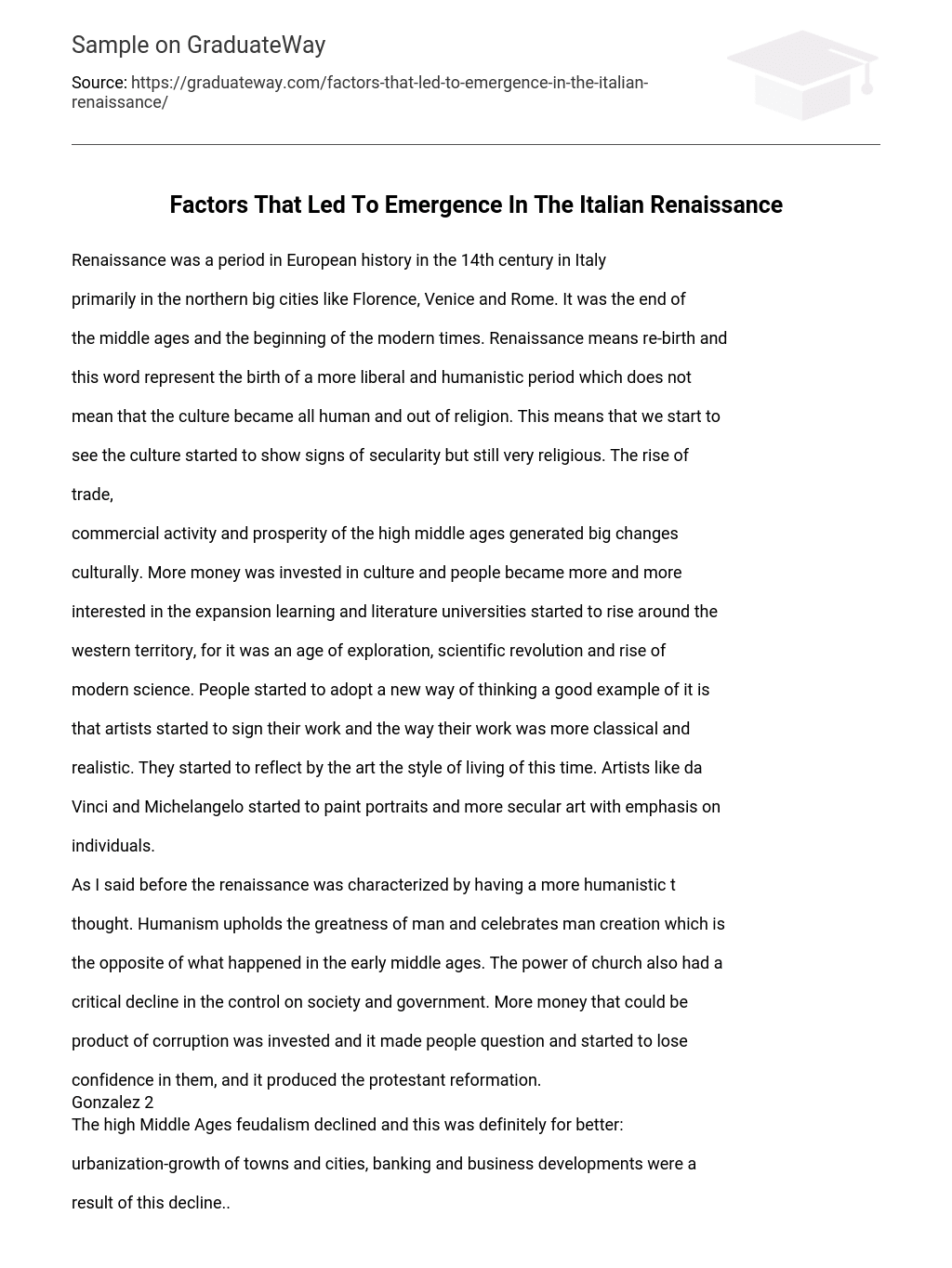Renaissance was a period in European history in the 14th century in Italy primarily in the northern big cities like Florence, Venice and Rome. It was the end of the middle ages and the beginning of the modern times. Renaissance means re-birth and this word represent the birth of a more liberal and humanistic period which does not mean that the culture became all human and out of religion. This means that we start to see the culture started to show signs of secularity but still very religious.
The rise of trade, commercial activity and prosperity of the high middle ages generated big changes culturally. More money was invested in culture and people became more and more interested in the expansion learning and literature universities started to rise around the western territory, for it was an age of exploration, scientific revolution and rise of modern science.
People started to adopt a new way of thinking a good example of it is that artists started to sign their work and the way their work was more classical and realistic. They started to reflect by the art the style of living of this time. Artists like da Vinci and Michelangelo started to paint portraits and more secular art with emphasis on individuals. As I said before the renaissance was characterized by having a more humanistic t thought. Humanism upholds the greatness of man and celebrates man creation which is the opposite of what happened in the early middle ages.
The power of church also had a critical decline in the control on society and government. More money that could be product of corruption was invested and it made people question and started to lose confidence in them, and it produced the protestant reformation. The high Middle Ages feudalism declined and this was definitely for better: urbanization-growth of towns and cities, banking and business developments were a result of this decline.





